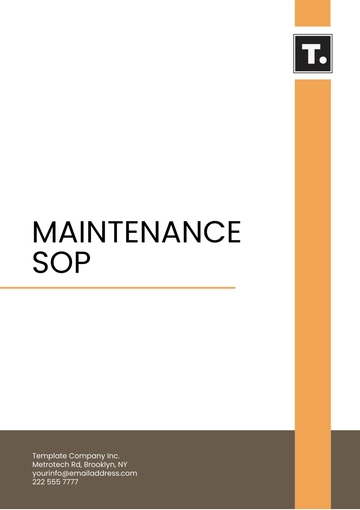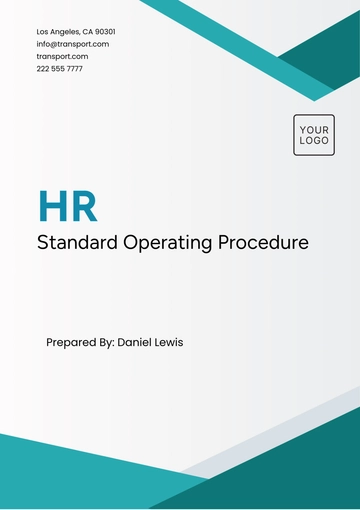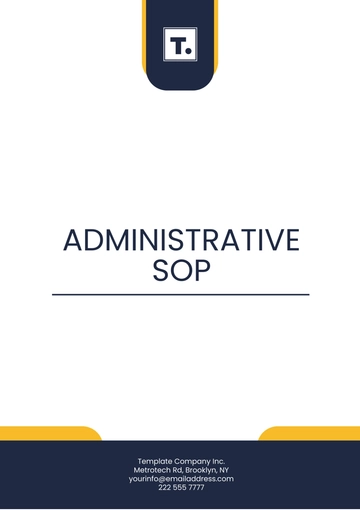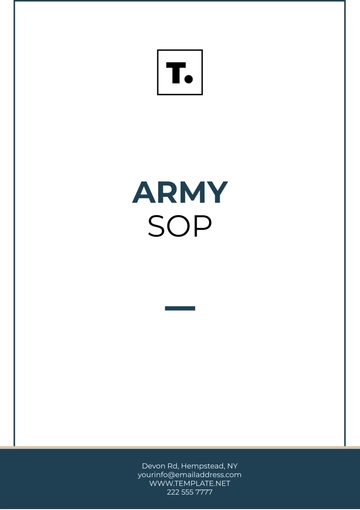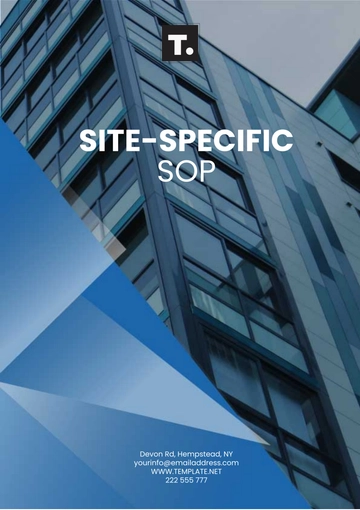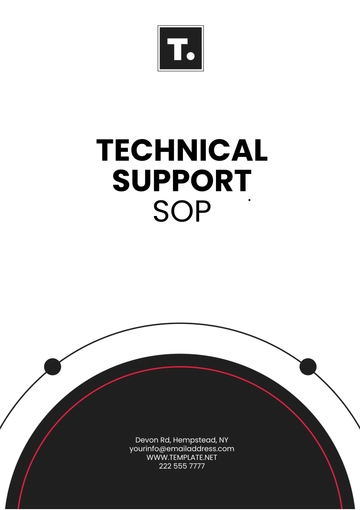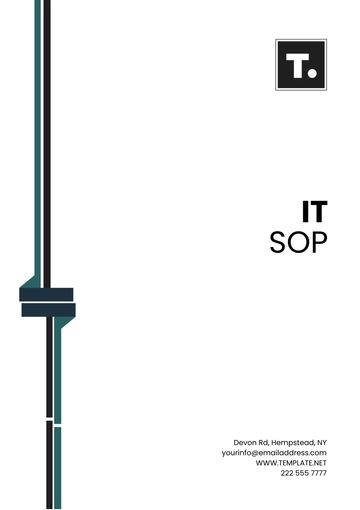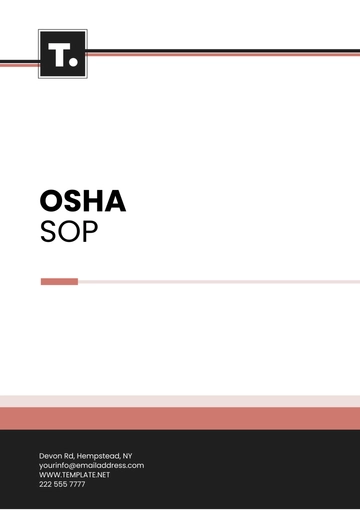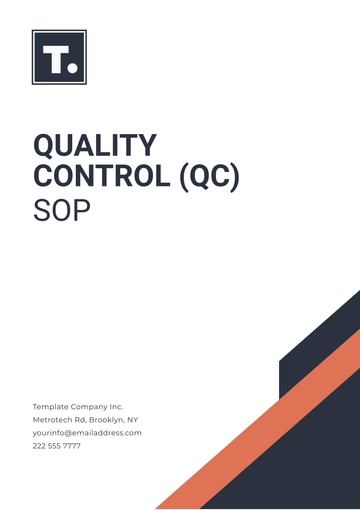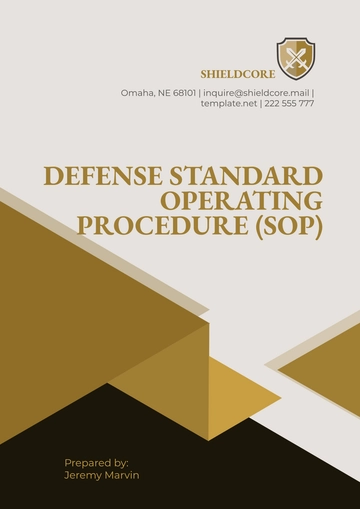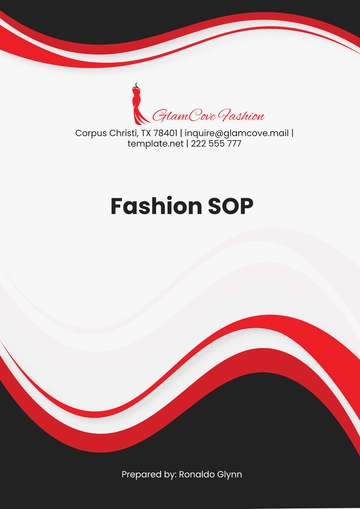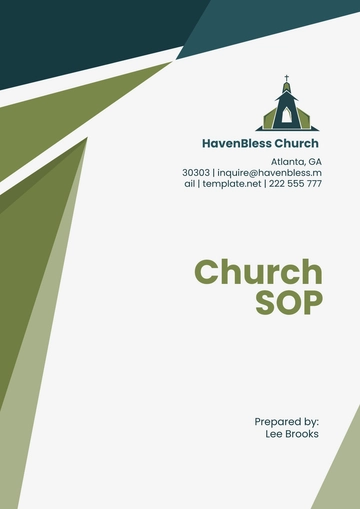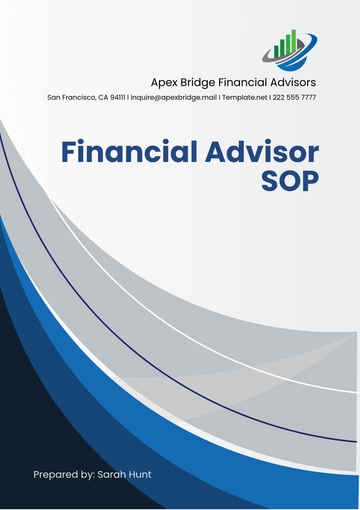Free Financial SOP
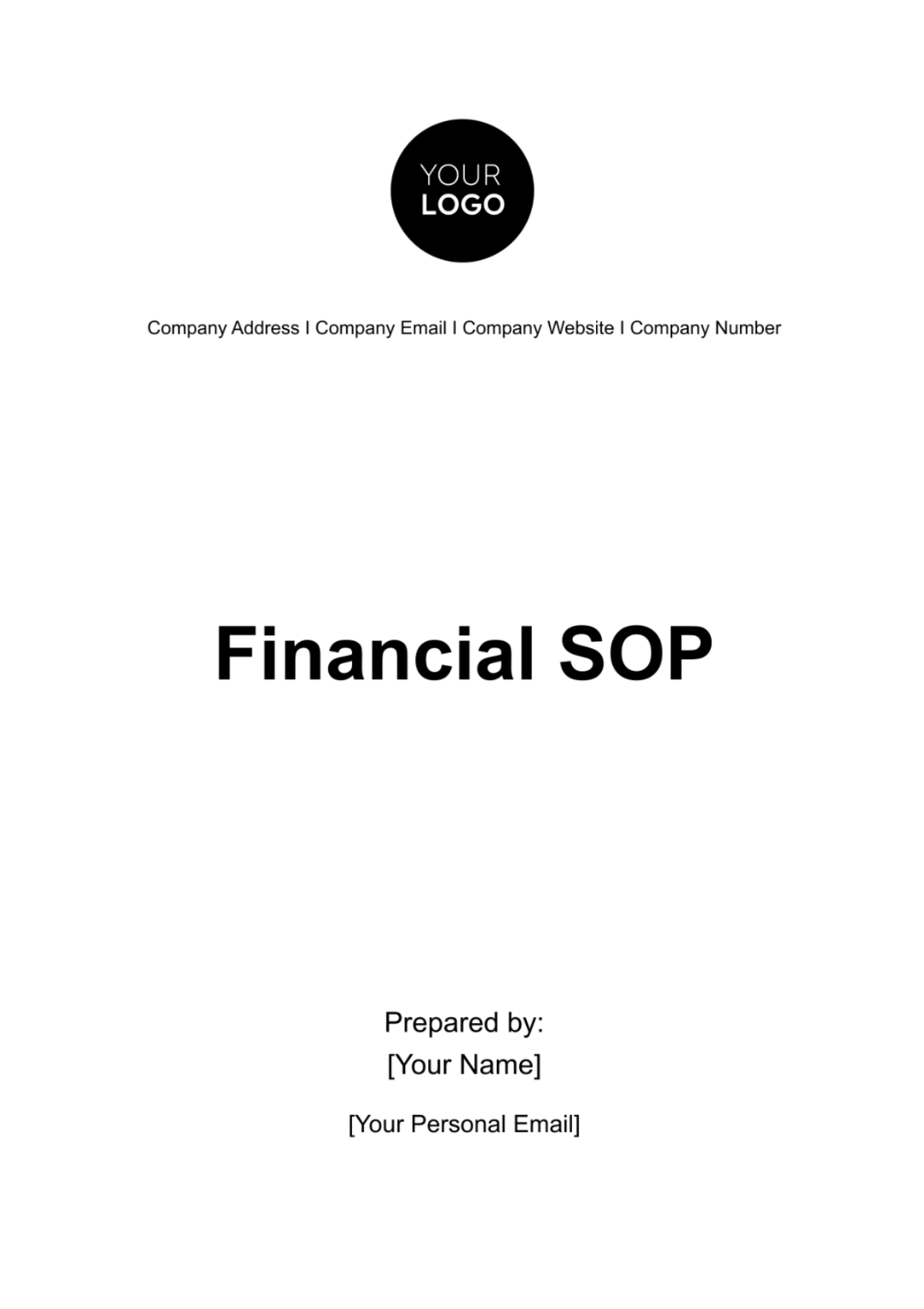
1. Introduction
This Financial SOP outlines standardized procedures for [Your Company Name]'s financial operations, ensuring legal compliance, consistency, and accuracy. It is essential for all employees engaged in financial activities and decision-making within the company.
Purpose and Scope: The primary objective of this Financial Standard Operating Procedure (SOP) is to establish a standardized framework for managing and executing financial operations within [Your Company Name]. This SOP aims to ensure accuracy, consistency, and legal compliance in all financial transactions and reporting. It applies to all financial activities including, but not limited to, accounting practices, budgeting, financial reporting, and auditing. The SOP is designed to align with U.S. financial regulations and standards, ensuring that all procedures adhere to best practices and legal requirements.
Target Audience: This document is intended for use by all employees of [Your Company Name] who are involved in financial processes and decision-making. This includes the Finance Department, Accounting Personnel, Budget Managers, and any other staff members whose roles require interaction with the company’s financial systems or data. It serves as a comprehensive guide for existing employees and an essential training resource for new hires, ensuring that everyone is aware of the procedures and responsibilities associated with the company's financial operations.
2. Definitions and Terms
This section of the Financial SOP provides definitions and explanations of specific terms, acronyms, and abbreviations used throughout the document. Understanding these terms is crucial for accurately interpreting and implementing the financial procedures described in this SOP.
Term/Acronym | Definition |
GAAP | Generally Accepted Accounting Principles: a framework of accounting standards, rules, and procedures defined by the professional accounting industry in the United States. |
CFO | Chief Financial Officer: the senior executive responsible for managing the financial actions of a company. |
ROI | Return on Investment: a measure used to evaluate the efficiency or profitability of an investment. |
FASB | Financial Accounting Standards Board: a private, non-profit organization standard-setting body whose primary purpose is to establish and improve Generally Accepted Accounting Principles within the United States. |
EBITDA | Earnings Before Interest, Taxes, Depreciation, and Amortization: an indicator of a company's financial performance which measures earnings before the deduction of interest expenses, taxes, depreciation, and amortization. |
SOX Compliance | Sarbanes-Oxley Compliance: refers to adherence to a set of auditing and financial regulations that aim to protect investors from fraudulent financial reporting by corporations. |
AP | Accounts Payable: money owed by a business to its suppliers shown as a liability on a company's balance sheet. |
AR | Accounts Receivable: the balance of money due to a firm for goods or services delivered or used but not yet paid for by customers. |
Fiscal Year | A one-year period that companies and governments use for financial reporting and budgeting, different from a calendar year. |
Liquidity | The ability of a company to meet its short-term financial obligations when they are due. |
3. Roles and Responsibilities
This section details the specific roles and responsibilities of various individuals and departments within [Your Company Name] in relation to financial processes. Clarity in these roles ensures accountability and effective management of financial tasks.
Role/Department | Responsibilities |
Chief Financial Officer (CFO) | Oversees all financial operations, including budgeting, forecasting, and investment strategies. Ensures compliance with financial regulations. |
Accounting Department | Manages day-to-day financial transactions, record-keeping, and reporting. Responsible for accounts payable and receivable. |
Budget Managers | Develops and monitors departmental budgets. Ensures spending aligns with company objectives and financial constraints. |
Internal Audit Team | Conducts regular audits to ensure financial compliance and identifies areas for improvement. |
Compliance Officer | Ensures adherence to financial laws and regulations. Stays updated with changes in financial legislation. |
Finance Committee (if applicable) | Provides strategic financial oversight and guidance. Reviews major financial decisions and policies. |
Payroll Department | Manages employee payroll, tax deductions, and benefits administration. |
Procurement Team | Oversees purchasing activities, negotiates with suppliers, and manages contracts to optimize financial efficiency. |
Treasurer | Manages the organization's cash flow, investments, and liquidity. Oversees financial risk management strategies. |
4. Policies and Regulatory Compliance
This section of the Financial SOP outlines the policies governing [Your Company Name]'s financial procedures, ensuring adherence to the relevant U.S. laws and regulations. Compliance is integral to maintain the integrity and reputation of the organization.
Key Compliance Areas
GAAP Compliance: Adherence to Generally Accepted Accounting Principles ensures transparency, consistency, and accuracy in financial reporting.
Sarbanes-Oxley (SOX) Compliance: Compliance with SOX is mandatory for all public companies in the U.S. This includes maintaining accurate financial records, implementing internal controls, and undergoing regular audits.
Anti-Money Laundering (AML) Policies: Procedures to prevent, identify, and report money laundering activities, in accordance with the Bank Secrecy Act and the Patriot Act.
Tax Compliance: Ensuring accurate and timely filing of all tax documents as required by the Internal Revenue Service (IRS), including income tax, payroll tax, and sales tax.
Internal Audits: Regular internal audits to ensure financial procedures comply with both internal policies and external legal requirements.
Data Privacy and Security: Adherence to data protection laws, such as the General Data Protection Regulation (GDPR) and the California Consumer Privacy Act (CCPA), in handling financial information.
Risk Management Policies: Implementation of strategies to identify, assess, and mitigate financial risks.
5. Procedure Steps
This section of the Financial SOP offers a comprehensive, step-by-step guide for key financial tasks and processes at [Your Company Name]. These detailed instructions are designed to ensure consistency, efficiency, and compliance across all financial operations, from invoicing to financial reporting.
Budget Planning ↓ Invoice Processing ↓ Financial Reporting ↓ Expense Reimbursements ↓ Internal Auditing ↓ Compliance Checks |
6. Documentation and Record Keeping
In this section of the Financial SOP, we outline the critical aspects of documentation and record keeping at [Your Company Name]. It specifies the types of financial records to be maintained, documentation methods, and the retention periods, ensuring compliance with legal standards and organizational needs.
Types of Financial Records to be Maintained
Audit Reports
Asset Registers
Investment Records
Accounts Payable and Receivable Ledgers
Budget Documents
Financial Statements
Contractual Agreements and Procurement Documents
Compliance Documentation
General Ledger
Bank Statements
Invoices (both issued and received)
Receipts
Payroll Records
Tax Filings and Reports
Expense Reports
7. Internal Controls and Audit Trails
Internal Controls and Audit Trails
Internal controls are essential mechanisms within [Your Company Name]'s financial framework to prevent and detect errors, fraud, and irregularities. These controls are designed to safeguard assets, ensure the accuracy and reliability of accounting data, promote operational efficiency, and enforce adherence to prescribed managerial policies.
Key Elements
Segregation of Duties: Different individuals handle different stages of financial transactions to prevent conflicts of interest and fraud.
Authorization and Approval: Financial transactions require proper authorization and approval from designated personnel, based on predefined limits.
Reconciliations and Reviews: Regular reconciliation of bank statements and thorough review of financial reports to detect discrepancies.
Physical and Digital Security Measures: Secure access to physical and electronic financial records to protect against unauthorized access or tampering.
Audit Trails: Maintaining detailed records of all financial transactions, including the date, amount, participants, and nature of the transaction. This ensures traceability and accountability, facilitating audits.
Regular Internal and External Audits: Conducting periodic audits by internal teams and external auditors to assess the effectiveness of internal controls and compliance with regulations.
Risk Assessment and Management: Regularly assessing financial processes for potential risks and implementing measures to mitigate them.
8. Risk Management
The Risk Management section in the Financial SOP of [Your Company Name] is structured to actively identify, assess, and mitigate various financial risks. This section is crucial for safeguarding the organization against potential financial threats and ensuring long-term financial stability.
Identification | Identification | Assessment | Mitigation |
Market Risk | Fluctuations in stock market affecting portfolio value. | Analyze historical market trends and portfolio sensitivity. | Diversify asset classes; use futures and options for hedging. |
Credit Risk | Potential non-payment by a major client. | Evaluate client's credit history and current financial status. | Set credit limits; require advance payments or guarantees. |
Operational Risk | Risk of system failure impacting transactions. | Assess frequency of system downtimes and backup procedures. | Regular system maintenance; invest in robust IT infrastructure. |
Compliance/Legal Risk | New financial regulations impacting operations. | Review changes in laws; consult legal experts for implications. | Update internal policies; conduct compliance training for staff. |
Strategic Risk | Investing in a new market segment. | Evaluate market potential and company's readiness for expansion. | Phase-wise investment; set measurable performance indicators |
9. Revision and Update Procedures
The Financial SOP of [Your Company Name] is a dynamic document, requiring regular reviews and updates to remain relevant and effective. This process ensures that the SOP adapts to evolving financial practices, regulatory changes, and the company’s strategic needs.
Key Procedures
Annual Review: The SOP is subject to a comprehensive review every year by the Finance Department, with input from relevant stakeholders.
Regulatory Monitoring: Continuous monitoring of changes in financial regulations to incorporate necessary updates promptly.
Feedback Mechanism: Establishing a system for receiving and integrating feedback from employees involved in financial processes.
Update Approval: Any significant changes proposed must be reviewed and approved by senior management, including the CFO and Compliance Officer.
Documentation of Changes: Documenting all revisions with dates and descriptions of changes for transparency and tracking.
Communication and Training: Ensuring all relevant personnel are informed of the updates and provided with training if necessary.
- 100% Customizable, free editor
- Access 1 Million+ Templates, photo’s & graphics
- Download or share as a template
- Click and replace photos, graphics, text, backgrounds
- Resize, crop, AI write & more
- Access advanced editor
Elevate your financial management with Template.net's Financial SOP Template. This fully editable and customizable template is designed to streamline your financial processes. Tailored to meet your company's specific needs, it's easily modifiable in our Ai Editor Tool, ensuring a seamless integration into your financial operations.




